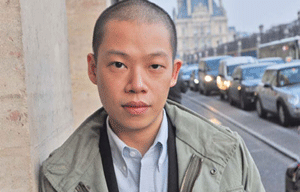Govt steps up push for subsidized residences
Updated: 2011-10-02 07:16
By Zheng Jinran (China Daily)
|
|||||||||
BEIJING - China's State Council announced this weekend that local governments that have failed to complete the construction of planned subsidized housing projects will not be allowed to construct or buy new official buildings.
In response to complaints about soaring property prices, China plans to have 36 million subsidized residences built in 2011 and the next four years. Ten million of them are to be built this year alone.
Gu Yunchang, vice-president of the China Real Estate Association, said on Saturday that some officials do not seem to be taking the projects seriously.
"Some local governments have squandered large amounts of revenue to have luxurious official buildings for themselves and have left little money for subsidized housing for the people," he said.
The State Council said its goal is for 20 percent of the urban population to be living in subsidized housing by 2020.
To ensure the residences being built are of a high quality, every step of their construction should be "guaranteed and supervised", the council said.
Gu said there is now only enough subsidized housing for 7 percent of the urban population, which falls short of meeting the needs of low- and middle-income earners.
"The central government plans to build more low-cost houses," Gu said. "But the number of houses built will vary according to the needs in different places. For example, in large cities such as Beijing and Shanghai, as much as 30 percent of the population will have them. In smaller cities, it may be less than 10 percent."
Of the subsidized-housing projects that the government plans to have built in 2011, 86 percent were under construction within the first eight months of the year, according to statistics from the Ministry of Housing and Urban-Rural Development.
"Although more subsidized homes will be built in the future, technically speaking, that will have little influence on the real estate market because their targets are different," Gu said.
"These houses are for those in the low- and middle-income brackets, who can't afford commercial houses."
In the future, people who can afford market-rate properties may also be allowed to buy subsidized houses, he said. That, he said, will lower the demand for non-subsidized real estate.
"With other measures, such as setting limits on property purchases and setting property targets, that could cool the market," he said.
In September, the State Council released several guidelines to guarantee that subsidized housing projects will have the financial support, an adequate stock of land and other resources they need to go forward. It also called for local governments to set a priority on the construction of subsidized apartments for low- and middle-income families, new graduates and migrant workers.
"All the moves show that the central government has been working hard to bring balance to social development," said Dang Guoying, a researcher with the Rural Development Institute of the Chinese Academy of Social Sciences. "In the long run, it will better promote economic development."
He said the projects offer hope to people, giving them places to live in that they can afford. The projects also allow people to take money they would have put toward rent and spend it on other things, helping to bolster the economy.










